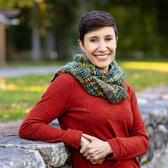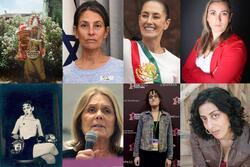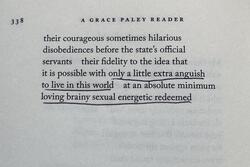The Trichitza Phenomenon
Trichitza. A strange word, no? Until I was in Israel two weeks ago and prayed in a trichitza setting for the first time, I’d never heard the word before. Shortly thereafter, I came across a trichitza-related article in the November/December 2006 edition of New Voices. I’ve since learned that over the past few years, a growing number of communities have experimented with a trichitza, defining religious space in new, pluralizing ways.
Adapted from the word mechitza (which literally means “separation” and refers to the physical divider traditionally used to separate men and women during prayer services), a trichitza divides the prayer space into three sections: one exclusively for women, one exclusively for men, and one not classified by gender. This provides options for nearly everyone: those whose Jewish practice is built upon gender-egalitarianism, those who wish to pray in a gender-specific space (i.e. they believe it is required by Jewish law or because they do not want to be distracted by the opposite sex, or because they just prefer it), and those whose own gender-identity lies outside of the male/female binary.
The author of Mah Rabu, a blog about Jewish politics, culture, and religious issues writes of the trichitza: “It’s an elegant idea that didn’t exist and then someone came up with it, and everyone said: ‘why didn’t I think of that before?’”
Interestingly enough, this idea had been explored as early as 1954, when a conflict arose over “optional family seating” in Congregation Adath Israel of Cincinnati, Ohio.* This conflict occurred at a time when Conservative synagogues were struggling to reconcile American egalitarianism with halachic practice. The plan for Adath Israel was to reserve the extreme right and left sections of the synagogue for men and women respectively, and designate the middle section for those who wished to sit together. These sections were not partitioned with physical barriers, but the point is that options were being offered for different worship practices.
In 2007, at a time when the Jewish community feels especially fractured, the trichitza may be the closest we’ve come to an all-inclusive prayer model, especially since its function shifts with “consumer demand.” Even so, it has met some criticism in regard to whether a dually egalitarian and sex-segregated framework is ideologically possible. If I identify as a liberal Jew who prefers to pray in an egalitarian setting, should I refuse to pray with a trichitza because of the presence of what I understand as oppressive gender-distinctions, even though I’m given the option of praying in the non-gendered, unoppressive space? Conversely, if I am a more traditionally observant Jew, is it okay to pray near others who are ignoring the gender-distinctions that I embrace? Can there be such a thing as “separate but egalitarian?” Is egalitarianism an individual choice or a communal one?
*Source: Regina Stein, “The Boundaries of Gender: the Role of Gender Issues in Forming American Jewish Denominational Identity, 1913-1963,” (Ph.D. dissertation, Jewish Theological Seminary, 1998), p. 194.; Jonathan D. Sarna, “The Debate Over Mixed Seating in the American Synagogue,” in The American Synagogue: A Sancturary Transformed, Jack Wertheimer, ed. (Cambridge, U.K., 1987), p. 368.






